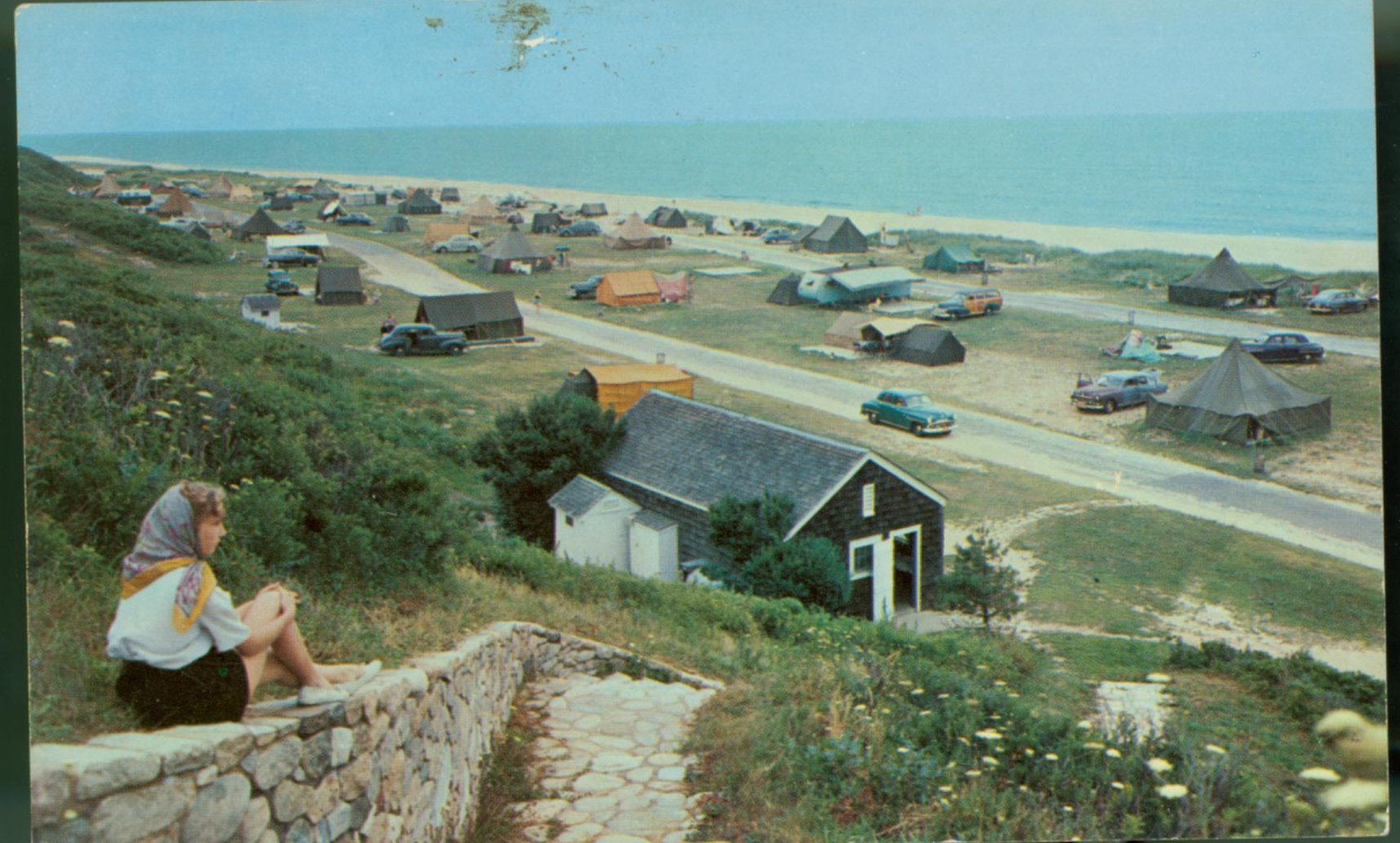Hither Hills State Park, c. 1950s.
Postcard from the Montauk Library’s Postcard Collection.
The pensive girl in the kerchief and the stone walkway lend a kind of European flavor to this thoughtfully composed image. Andrew Wyeth’s “Christina’s World” also comes to mind. Could the photographer be paying homage to a famous painting?
The image, which is from the Montauk Library’s Postcard Collection, is from the 1950s. Although it wasn’t widely used, color photography was indeed available at the time — in fact it had been, in a rather labor-intensive form, since the late 19th century. In the 1930s, Kodak introduced Kodachrome, which made it possible for even amateur photographers to snap color shots, then send the film away to be developed. The hitch was that shooting in color was more expensive than in black and white, and it yielded less reliable results. It really wasn’t until the 1970s, when prices had come down and light sensitivity had improved, that most people preferred to load a roll of color film into their cameras.
The setting for this lovely shot is Hither Hills State Park, for which we have Robert Moses to thank. In the 1920s, Moses wanted to include this tract of wild beachfront property – including the Walking Dunes to the north — in his planned grand network of New York State parks and parkways. Moses and the land’s owners reached an agreement, but then the property owners discovered that Carl Fisher wanted to transform Montauk into a luxury resort, which increased the value of their land. They backed away from a deal with Moses, then he did what any self-respecting power broker and political ringmaster would do: He condemned the land, or at least the choicest 1,700-plus acres of it.
On Long Island alone, Moses managed at the minimum to procure property for parks from Montauk Point and Hither Hills to Fire Island and Jones Beach and many more, impressively stretching a starting budget of only $1 million. “By the end of 1926, the beaches of Long Island, once reserved for the rich, were dotted with wooden bathhouses open to all,” Robert Caro wrote in The Power Broker, his Moses biography.
In hindsight it seems like a very good thing. Hither Hills to this day is an immensely popular campground, often with many generations of visitors forging memories that last a lifetime. Most likely the girl in the kerchief was simply one of those happy campers.

2 Comments
This is my mom in the pic! It was from the late 1950s. Do you have copies of it?
This is my picture,taken in the 50’s
Diane Duca. We camped at Hither Hills, for years
Our tent was down the hill,in this picture.
Delpretediane@gmail.com